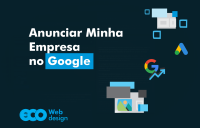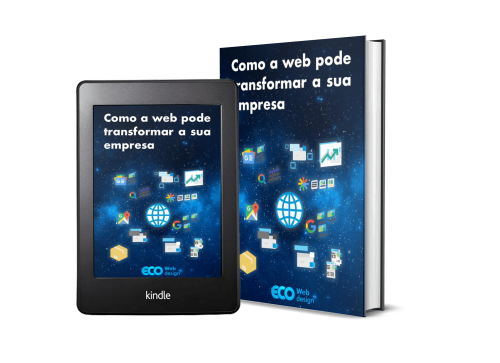Table of Contents
- Introduction
- What are the networks and formats to appear on Google?
- 10 Hot Topics for SEO in 2024
- important considerations
- Conclusion

1. Introduction
Today we have a scenario in the world of SEO where the only certainty is that everything is in constant movement. Technologies constantly evolve and open up new ways of searching, finding answers and interacting with other people.
In this article we will address how Google is adapting and what we need to do to receive the benefits of this segment that involves millions of people in Brazil alone and, to start, we need to know, before: "How to appear on Google?"; What, after all, are the options for appearing on Google?
2. What are the networks and formats to appear on Google?

Search Network: The search network is the most traditional. Today you can access it through various sources, such as directly through the browser, accessing google.com or google.com.br (Google Brazil), directly through the Google app on your cell phone or through voice assistants. The search network returns different types of results to the search, it is probably the vehicle that changes and receives the most tests, as it tries to enrich the experience on different levels. It is common for the search network to integrate maps, fragments of ready-made answers and special widgets for films, books, important people, sports games, among others.
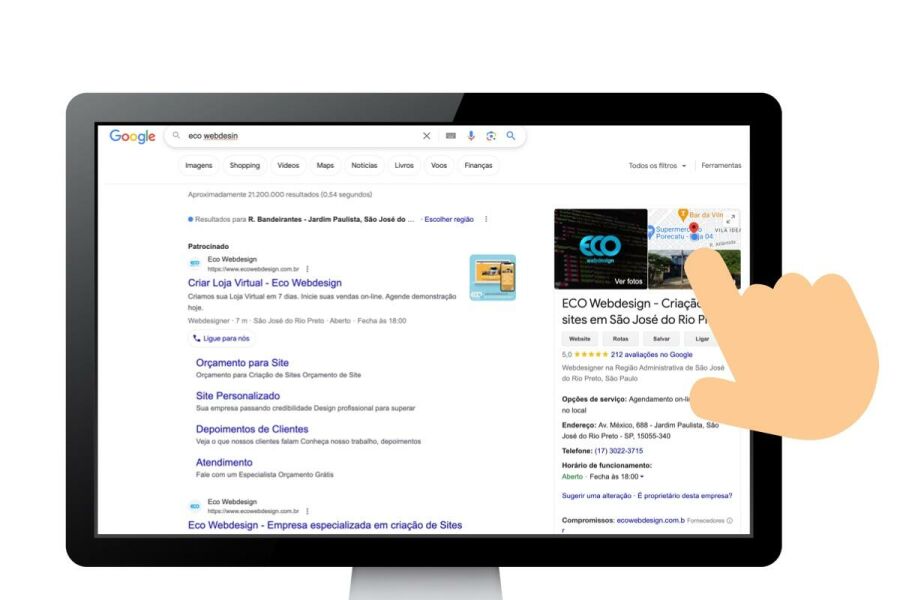
Google Maps: We can classify this search as "Search for places and places". This search is enhanced by geolocation resources and has powerful Google tools such as Google Street View, which has 360 photos and virtual tours, in addition to Google Business Profile, where companies with a fixed location can explore various resources to publicize their company, including assessments. Furthermore, Maps has the benefit of the cell phone's GPS, quickly connecting the person (via their cell phone) to resources in the region where they are, for example, notifications to evaluate a location after their visit are common.
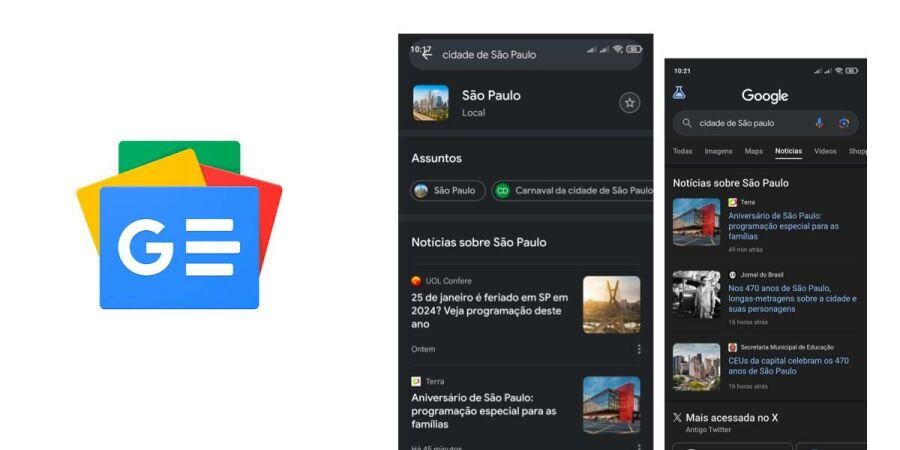
Google News: The news vehicle is specifically for linking editorial articles. This service has specific features and documentation so that content creators, newspapers and media outlets in general can disseminate their materials properly. Google News is the main channel for this dissemination, however, it is common for Google to mix News results directly into the search network, Discover, feeds, among others. Additionally, there are specific Google applications such as "Sports" where it creates specific lists of articles in the sports segment. In short, articles are used in several different channels.
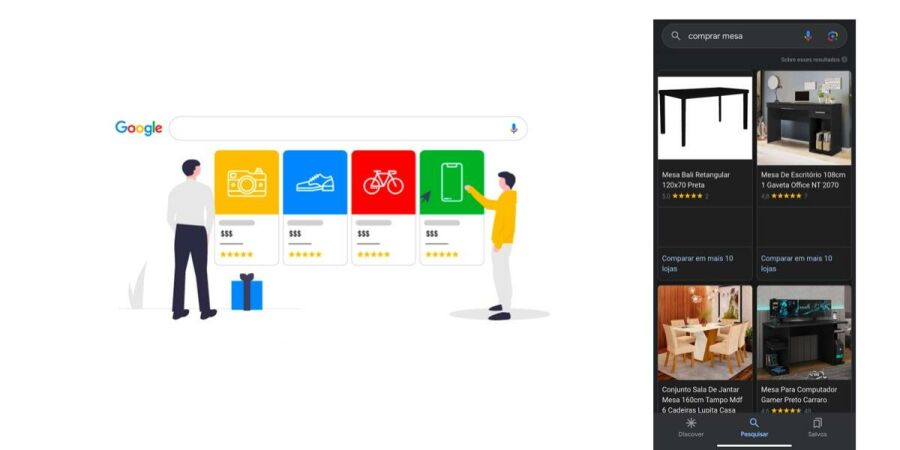
Google Shopping: As the name suggests, it involves product research. Access via the Google Shopping tab itself or on the search network itself when it comes to products, this channel has specific characteristics, as the product displayed must follow a series of guidelines such as: name, MPN (manufacturer code), price, availability in stock , among many others, to be eligible and reliable and thus be displayed to visitors. The focus is virtual stores and there are tools such as Google Merchant Center available for stores to manage their product catalogs, view insights, among others.

Google Discover: Unlike everyone else, Google Discover is not a results format related to a search. Users don't search for anything on Discover. Google Discover is presented to the user when accessing the Google page on their cell phone or application and its presentation is a "news feed" based on their interest and previous searches. Google Discover is a powerful advertising channel in Brazil.
Youtube: Youtube is the main online video viewing channel in Brazil and is present on the web, applications, TVs and cars. Youtube videos appear on Google Search networks, Discover and, obviously, in Youtube searches themselves. The vehicle has extensive coverage of the video segment, offering videos of different sizes, live streaming and Shorts, its short video format.
Waze: Waze is a route and traffic app, where the focus is on drivers. It can be classified as a sub-product of Google Maps, it dominates the route search sector in Brazil and is linked to Google to display ads and general information. Its base of available information increases every year, such as fuel prices, car services, internal routes in shopping malls and much more. Its use can be interesting and triumphant for specific niches such as shopping malls and gas stations.
3. 10 Hot Topics for SEO in 2024
Now that you know or have remembered the channels where we can work with SEO, let's look at the main topics to appear on Google in 2024:
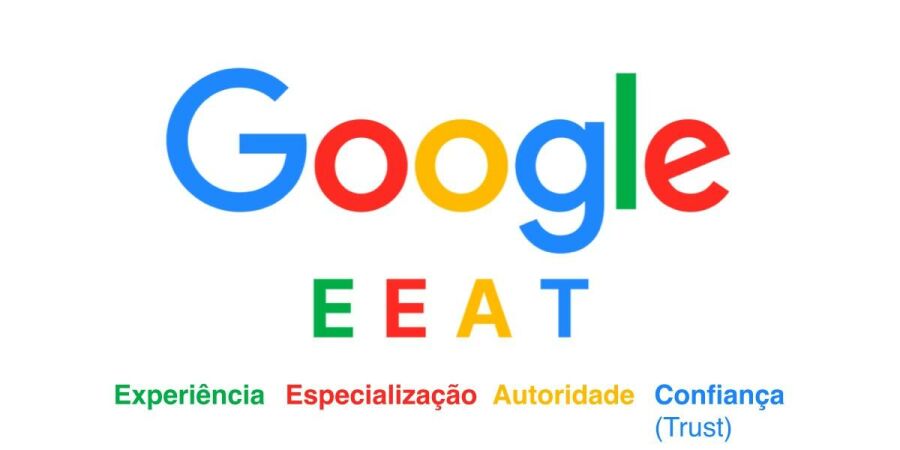
1 of 10: Authority (EEAT and YMYL)
In general, authority comes down to the reliability of your vehicle (website, company or authors) when addressing a subject. For example, is it more natural to believe a pianist who has played with the biggest names, has a YouTube channel and extensive social networks or a first-year music student when searching for "How to be a successful pianist"? The authority seeks exactly this, to offer the best and most reliable sources for its users.
The acronym EEAT brings the first words in English for Experience, Expertise, Authoritativeness and Trust which we can translate to "Experience, Specialization, Authority, Confidence" in Portuguese. Understand each item of this Google quality assessment fact:
Experience: It is the newest item, added in 2022. In this item, the authors or those responsible for the content need to demonstrate experience (to share experience). The authors need to be renowned, specialized and the more historical (proven on the website and social networks), the better.
Specialization: Specific content needs to be addressed by experts. Google in this case looks for certification, credentials, awards or events to ensure that you really are an expert on the subject.
Authority: What influence does your content have on the segment and on people? The authority that generates value is shared, accepted and followed by people. Having important sites backlink to yours, sharing from people with large followers, and citing your content are all ways to increase authority.
Confidence: Trust is the central pillar of the EEAT, as to have trust it is necessary to convey experience, expertise and authority. Factors such as online reviews, security certificate, and online reviews are factors that affect trust.
As to YMYL, in turn, the English acronym your money, your life translated to “your money, your life”. These are specific contents that Google evaluates as sensitive (and subject to in-depth analysis) as they can alter the user's financial life or their physical and/or emotional health. In short, Google cares a lot about what the user will do based on the answers offered to them, consequently, its content should in no way mislead the user into anything harmful, dubious or risky.
In conclusion, the quality of your content needs to meet these items and you can use them as parameters and objectives to follow when asking questions like these examples: are my content producers specialized? How can I specialize my team more? How to integrate my company into the scenarios of my segment? How do I collect cases and reviews from my customers and users? What sites link to mine? Among others.
2 of 10: User intent and needs (keywords)
Simply put, the objective of the search is to offer an answer. If the answer is good, the user stops searching or searches for other things they learned or knew in the previous search.
However, the difficulty is usually in understanding how people are searching for these answers, which is where keywords come in to meet people's intentions and needs. We can define keywords as the text that people type or are generated by voice search. All the words together is the search term.
Eg
🔍 “furniture store near me”
👆🏻 This is a search term with the keywords: store; furniture; close; me.
The shorter the term, the greater the competition. For example: “Brazilian t-shirt” has high competition, as it has 2 keywords”, while “buy Brazilian t-shirt in the center of São Paulo” contains 6 words and the competition is considerably lower. We call these multi-word terms “long-tail terms”.
Regarding the user's intention and needs, the answer is also in the term and needs to be explored in a broad way, not just with the terms themselves, as was normally practiced.
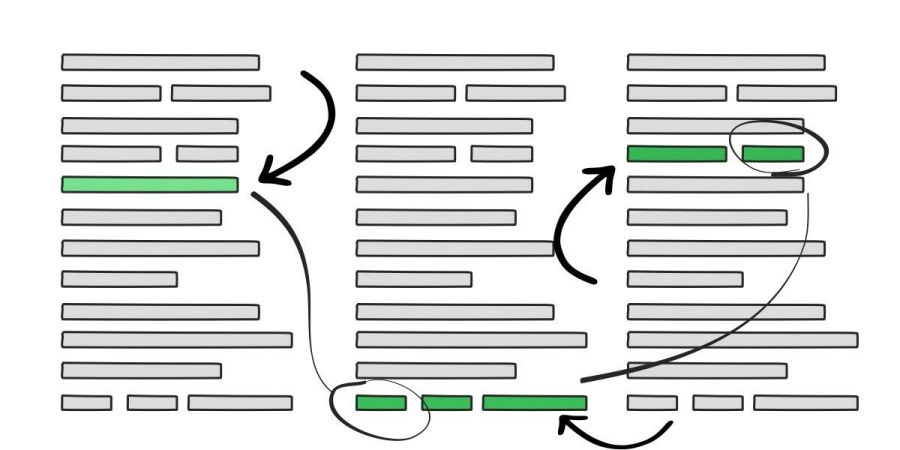
Let's look at examples of terms:
🔍 “Vehicle garage near me”
👆🏻 The intention is to go to a physical store. The need is to purchase a vehicle. This can be explored extensively by showing the store's amenities, good conditions and chatting with the attendants. In other words, on the website there may be similar terms such as “Vehicle garage in X” (the localization system will help) and the content must have an appropriate response.
🔍 “Which tablet is better?” -
👆🏻 The intention is to acquire information about tablets and the need to purchase an electronic device.
🔍 "What to do in Rio de Janeiro?"
👆🏻 The intention is to acquire information about the location and the need to acquire leisure and entertainment.
🔍 "Wooden bookcase with drawers"
👆🏻 The intention and need are subjective, which can be purchase, information, seeing images, among others.
🔍 "Buy wooden bookshelf with drawers"
👆🏻 The intention is clearly to use e-commerce and the need is for the described object and its peripherals.
🔍 "How to make a wooden shelf with drawers"
👆🏻 The intention now is to acquire information and the need is for e-learning (video class, course, tutorial).
It is important to highlight that in the past, the focus was on exploring search terms mechanically and with the main changes coming from Google updates, it is essential to explore ways of resolving the intentions and needs arising from the terms searched.
3 of 10: Prioritize mobile indexing (even more)
For several years now, the terms "responsive website", "mobile version" or "mobile first" have been widely used in the world of SEO. This deals with the interface and experience of the visitor when accessing the cell phone and continues to be on the rise.
The tools to help check whether a website meets these standards have also improved and it is easier to identify whether a website meets these requirements. For example, when using Google Search Console, we have the Page Experience and Core Web vitals tabs. It is only possible to be eligible for both with a mobile-friendly website and can be a great parameter to evaluate the prioritization of mobile indexing.
4 of 10: Using artificial intelligence in SEO
As a big rising topic in the world of technology, there will probably already be several new applications with specific AI services when you are reading this article, however, I will add the main benefits that artificial intelligence can offer to SEO and also its main dangers.
Advantages of AI in SEO: It is impossible to talk about SEO without dealing with data, a lot of data and AI has evolved a lot in terms of tools to process this data and synthesize information about user behavior, text optimizations, opportunities for greater reading, insights into themes, among many others. When writing this article, for example, I used various AI tools more than 30 times, from text correctors to insights on the topic.
Disadvantages of AI in SEO: Using texts generated by AI to produce content degrades the website in terms of exclusivity, originality and opens the way for SPAM. In other words, "lazy use of AI" to try to quickly solve your content problems can get your website banned (and this is a much more serious problem than the difficulty of producing content). Remember that Google's systems have the best (or among the best) AI technology to detect this and if you managed to bypass it, you wouldn't be reading this.
5 of 10: Long-tail terms and contextualization
Now talking specifically about long-tail terms (which contain several keywords), they can be the answer to several questions for your business, as they can reveal a new element: audience niches.
By better understanding niche audiences, you can offer an experience tailored to the wants, needs, and interests of certain people who may also be part of a specific location.
It is important to emphasize that every year it becomes more natural. According to studies such as Synup, more than 1 billion voice searches were carried out in 2023 and Google itself announced that 27% of searches carried out on the Google app are also by voice. Typically the terms generated by voice search are larger, that is, long-tail terms.

See below 2 example terms and their niche audience context to better understand:
🔍 "Dog hotel in X"
👆🏻 This term reveals the intention of information about dog hotels and the need to acquire these services, as we saw previously, now thinking of it as a niche audience, it is still very broad.
🔍 "Hotel for elderly dogs in X" (🏆 niche audience)
👆🏻 The interest and need are the same, however, we now have a specific niche audience: pet seniors. This information opens up a range of possibilities for specific products, specific hotel features and specific care.
When we manage to identify a niche audience, we enter an environment where there is usually less competition, more loyalty to brands and especially for SEO: greater CTR, engagement and value in the content.
It is easier to communicate with the user's real needs when serving them in their perfect niche and this adds authority to a specialist site rather than a generalist one.
6 of 10: Videos
Google loves videos and Youtube is its brand and market leader. Youtube videos appear in search results, it is estimated that 15% of accesses to YouTube videos are through Google searches. So the need to use YouTube to index better on Google is obvious.
Remember that using YouTube does not mean amateurism (just create a channel and post any video). You need to think about the channel, produce good art and a content strategy to engage your visitors. The underuse of an application denigrates the brand instead of adding value.
Furthermore, it is worth mentioning that Google has prioritized web pages where video content is the main element, these are "video pages". You can query your video pages in Google Search Console. It is important to understand that the page needs to be to promote the video and not the other way around, in this case the page is not indexed correctly. See an example:
Carry out online coverage of a show, adding the live YouTube player to the website, event descriptions, user comments on social media and polls. This is the kind of coverage Google loves.
7 of 10: Location: Searches by geolocation
In the industry, it is estimated that searches for information or services in the "searcher's surroundings" represent more than 46% of all searches on Google. So the direct or indirect use of terms such as: close to me, near me, on X street, among others; They are more common than they seem and they are opportunities.
For specific website niches with physical locations and specific service areas, it is essential to make clear contact information, opening times, appointments and routes. It is essential to use tools such as Google Business Profile, Google Maps and even Waze in specific cases.
In addition to specialized services, there is a way to enrich the website with information from structured location data, as we will see below. However, before that, it is important to emphasize the importance of a well-evaluated company profile, with customers commenting, posting images and with clear information about how it works. It's common to say in SEO that "the first step is to be found, the second is to convince the visitor to do business with you" - having the above information available is directly linked to the second part of the sentence.
8 of 10: Structured data

Structured data is stronger than ever as it enables special displays in search results and provides better understanding to better classify your content type to correctly serve searches.
In general, structured data is inserted into the website by a que é invisível aos usuários, ou seja, é para a leitura do Google. Há também formas de aproveitar o conteúdo em HTML para os dados estruturados, mas esta não é mais a forma recomendada.
Structured data is divided into data types and the same page can contain several depending on the content. See below the most popular websites:
Organization: It is used to provide details of a company, institution or organization. It is essential that all companies use this structured data on their website, as it provides Google with important information such as: organization name, logo image, description, address, institutional contact details, among others. By using structured data for organization, Google can better recommend your company and show extra information such as your logo, review, among others.
Article: This type of structured data is not exclusive to news portals. In principle, any website can write articles and they are great for SEO. A company, for example, can write articles about its products, services and best practices. The article's structured data explains to Google the article's name, publication date, updates and author. Publishing sites, typically linked with writing teams, may be eligible to appear more on Google News through this structured data.
Breadcrumbs: The literal translation of this term is "breadcrumbs", where the meaning is to leave a trail to know the way. In Portuguese it is known as structural navigation. Taking advantage of the concept of breadcrumbs, this is the functionality that shows where you are on the website and what is the path to return to the home page. The breadcrumb is powerful information for Google to understand the hierarchy and organization of your website. For example, when you see the links on a website: Home > Home Appliances > Computers and Notebooks > 15-inch Notebook; this is a breadcrumb. As stated above, it is not enough to be described on the website, it also needs to be inserted as a script in accordance with Google's guidelines.
Local company: This structured data is more specific than the Organization, as it deals with information related to the physical location and contains information such as location on the map, reviews, opening and closing times, link to the menu, whether there is parking, whether or not reservations are accepted, among others. . Its use is essential for local businesses such as stores, restaurants, bars, among others. The information in local business structured data is very similar to Google Business Profile, where the objective is the same. It is important that if you are going to use local company structured data it is necessary to update it periodically, especially if opening hours change or for holiday situations. If the website is not updated quickly, where it is usually more difficult, it is necessary to at least keep the Google Business Profile updated.
Product: Structured product data is the most complex and broad, as it describes product information from any segment with its own characteristics. This is mandatory structured data for virtual stores or e-commerce activities. The more complete the product is, the better Google understands it to display it. Due to the complexity, Google has a tool called Merchant Center just to manage the product catalog, check if the information is correct and correct inconsistencies. Just as an example, structured product data has information such as: product name, images in various proportions, description, SKU, MPN, brand, people rating, availability, currency used for purchase, price, price with discounts and many, many others.
Event: Structured event data provides activity information by merging Searches and Maps into a rich visualization that offers functionality such as purchasing tickets, adding events to the calendar, and more. When adding structured event data, it is possible to send information such as: start date, end date, time, location, images, address, description, values, organizations, parking, among many others. Structured event data is also a powerful tool for coverage, lives and streaming.
Concluding this introduction to structured data, it is important to understand that this functionality, by inserting these scripts into the pages, evolves the website to another level, as its content will begin to be associated with specific objects or information from the real world, adding value and veracity to the information. .
9 out of 10: People's opinions matter

Last year, Google carried out an update called Reviews update, where all passive review content will have the review taken into account by the search giant. Previously only product reviews were considered.
This extends, for example, to newsletters. A newsletter can have ratings and comments and this social interaction will influence searches.
There are other promises for Google for interactivity such as Notes, where users will be able to interact with search results. Even though this functionality is not yet open in Brazil and is being tested, it is important to emphasize that initiatives to better understand what people think about content are on the rise and are taken into consideration more than ever.
10 out of 10: Core WebVitals
Core WebVitals are metrics created by the Google team to evaluate whether the user experience is good or bad on a page. Today WebVitals results are available in Search Console and are used to rank the website in searches.
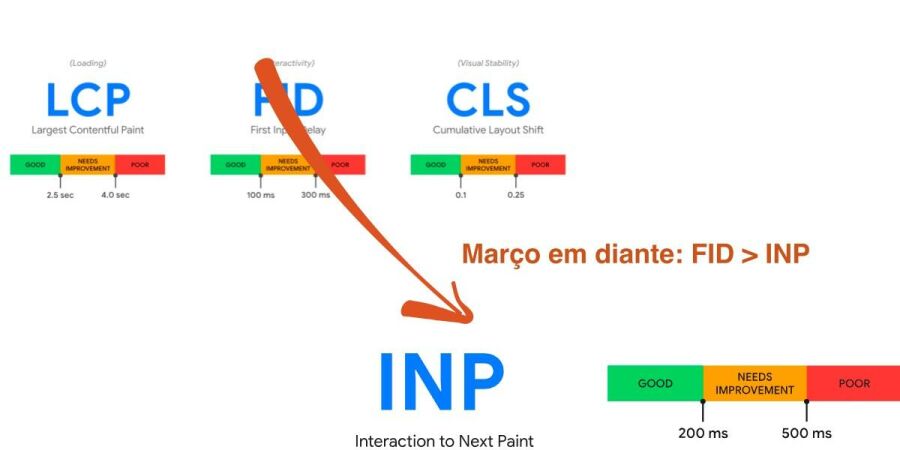
Core Web Vitals are metrics created by the Google team to evaluate whether the user experience is good or bad on a page. Today Web Vitals results are available in Search Console and are used to rank the website in searches.
The indices are numerical values and the test can be carried out via Google Chrome > Inspect > Lighthouse or on a website provided by Google: Pagespeed Insights. Even though tests can be carried out at any time, only in Google Search Console is there real approval or disapproval, as the data is based on people's browsing.
In general, Core Web vitals has 3 parameters:
LCP - From the English Largest Contentful Paint, the translation is Largest content display; According to this metric, the website is approved if it loads the first border (content that fills the first screen) in less than 2,5 seconds.
IN - From English First Input Delay, the translation is latency of the first input; This metric evaluates interactivity. When performing an action (click or tap, for example) the website needs to respond in less than 100ms to be approved.
CLS - From English Cumulative Layout Shift, the translation is Cumulative Layout Shift. This metric evaluates visual stability. The stability coefficient for the site to be approved is 0,1.
What changes in Core Web vitals in 2024
The FID index (which evaluates the time that the website responds to an action) will be replaced by the IN P in March this year. From the English Interaction to Next Paint, it translates as Interaction with next exhibition. The concept is the same, where something needs to happen on the page after the visitor clicks or taps. To be approved, the page must respond within 200ms.
important considerations
Adapt and keep up with changes: In 2023, Google launched 9 major updates, although it was 1 less than in 2022 and 2021, where 10 were launched, they had several impacts on websites. A good practice today may not be so good tomorrow, so it is important that content producers are aware that there will always be new changes and they need to adapt to them. And for developers, monitoring to anticipate impacts and adapt the website is extremely important.
A/B testing - test your pages: Google knows this more than anyone, it is always creating and managing tests to see the best way to display its results. Never think that there is only one way to get it right or your layout or content format is ready and cannot be optimized. A/B testing involves collecting data from 2 different page formats, whether titles, images, content layout or the entire page. This way, you can prioritize always displaying the most accepted version and learn from the mistakes of versions with less performance.
The user is above all: Remember that ultimately, everything is done for the visitor. The data and techniques are nothing more than clarifications to better understand the visitor and apply actions aimed at experiments rather than guesswork. It's no wonder that applications always ask for an evaluation for each action performed or websites with buttons to mark whether an article is useful or not. The most valuable information is always in the hands of those who use the website.
Sustainability: What is happening in the world is impacting the way people interact with companies, institutions and, consequently, with websites. Would you prefer to buy products from a company that prioritizes clean energy, has carbon neutralization policies, recycles and offers incentives for the consumption of organic products or from a company that disregards animals, practices illegal deforestation and disposes of its waste in groundwater? If your opinion is second to any other argument, you need to go back to school urgently.
Google Ads (PPC and PPV)
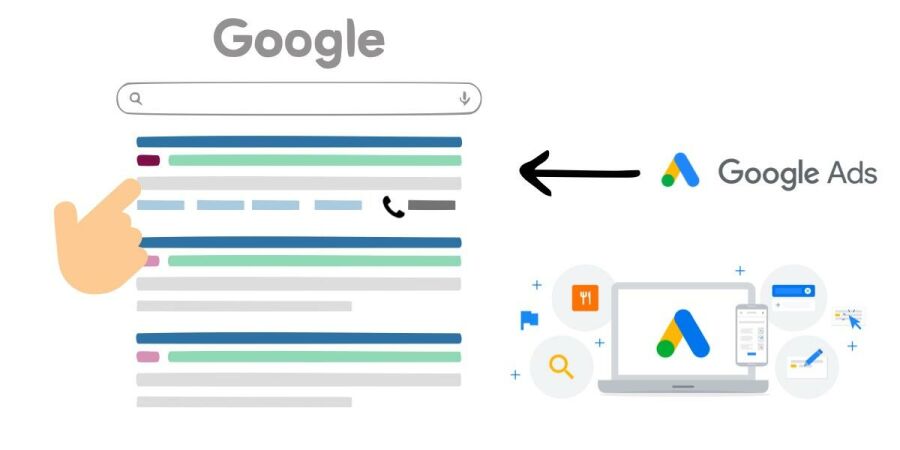
So far we have only talked about organic searches, however, search engine optimization also involves paid searches, or at least has an intrinsic relationship.
Google Ads is Google's advertising service, where you can pay to appear in searches (PPV - pay per view or pay per impression) or to receive visits (PPC - pay per click or pay per visit).
Ads on Google Ads, more than 90% of the time, use the website as the destination page, with the following flow: ad impression > visit to a website > achievement of the desired objective; for the website to fulfill its objectives well, it must comply with Google's guidelines and the content must be aligned with your interests and needs; This is also an SEO theme and this is one of the points of convergence.
Another point of convergence between SEO and Google Ads is the bid price. When you place an ad, Google will rate its quality and you will know the price per click. This classification involves several items such as competition, advertising quality and website quality. Websites with advanced SEO are better than websites without, that is, the chance of paying less per click is much greater when optimizing a website with SEO, increasing ROI and helping to make the campaign viable.
I think the most important thing is to understand this relationship between Google Ads and SEO right now. The Google Ads ecosystem is huge and more targeted reading is needed to understand it, for now and to know how to appear on Google in 2024, that's enough.
Conclusion
In this scenario of constant change, it is important to stay focused on the visitor, their interests and needs. Furthermore, to understand SEO well and how to appear on Google in 2024, always follow the news, features and where Google is targeting its efforts. Try to follow SEO channels on YouTube, such as the Google Search Console Channel and the Official Google Blog; for those who want more, X (formerly Twitter) also has quick updates.
It is also important to understand the importance of Google Search Console, mentioned several times above, without using the tool it is impossible to understand how to appear on Google or enter high-performance scenarios.
Finally, the SEO scenario may be less popular among some segments in relation to social networks, however, there is no large company that does not use Google channels, especially in Brazil, one of the countries where the most searches are carried out. This is an important issue and can change the reality of companies, providing more opportunities for jobs and growth.
You might also like to read
SEO: How to appear on Google in 2024
Searches, News, Discover, Shopping, EEAT, keywords and more. See what you need to appear on Google in 2024.
On 23/01/2024 at 14:47 pm - Updated on 11/04/2024 at 11:45 pm
Agency specializing in SEO for companies
Our team has SEO experts to carry out audits, performance evaluation, content planning, UX, training for content generators and much more
On 30/03/2024 at 23:03 pm - Updated on 30/03/2024 at 23:26 pm
How Long Does It Take to Start Seeing SEO Results?
Short answer: Your SEO efforts on your website will get you results on Google 4-6 months from now. Tracking in Search Console is essential.
On 04/04/2023 at 13:35 pm - Updated on 16/10/2023 at 08:53 pm
How to make my product or service appear on Google
It's not just your blog posts that index well on Google, here are 5 tips on how to make your products or services appear on Google.
On 04/04/2023 at 13:58 pm - Updated on 16/10/2023 at 08:53 pm
Advertise My Business on Google
The importance of advertising your business on Google to ensure visibility. Internet Positioning Marketing (IPM) and Google Ads as Pivots
On 05/04/2023 at 15:44 pm - Updated on 16/10/2023 at 08:53 pm





